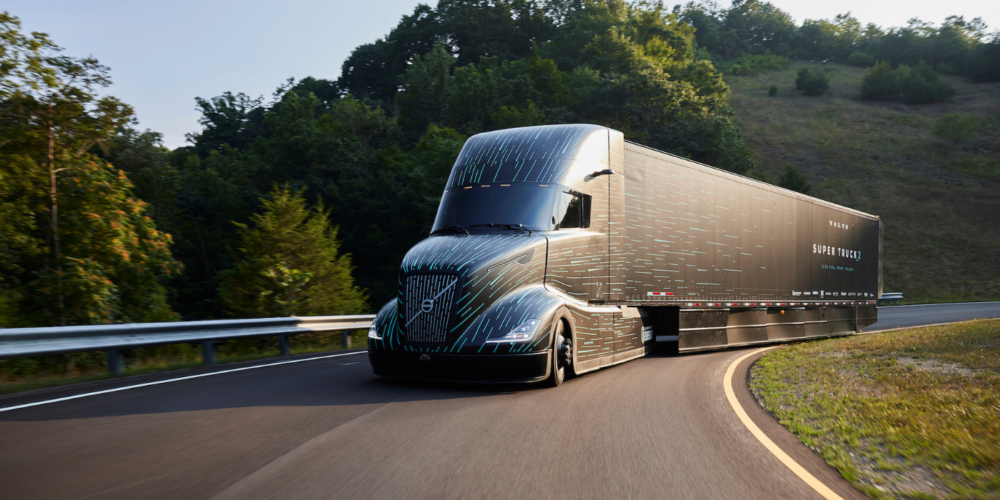Volvo Trucks North America’s SuperTruck 2 exceeded expectations and the U.S. Department of Energy’s goal of 100% freight efficiency improvement over their 2009 baseline. The SuperTruck 2 achieved a 134% increase in freight efficiency, according to the OEM.
For Volvo Trucks’ SuperTruck 2 program, advanced aerodynamics were the key to optimizing fuel efficiency. Starting with a wedge-shaped cab including a raked and wraparound windshield, a front end designed around a downsized cooling package, a fully aerodynamic trailer with gap fairings, skirts and boat tail, as well as an adjustable ride height. Volvo Trucks also replaced the traditional hood and cab mounted mirrors with a streamlined camera monitoring system to reduce the drag by more than 4%.
The tractor-trailer combination was designed to smoothly displace air with minimal resistance, resulting in 50% lower drag than Volvo Trucks’ 2009 baseline, the OEM noted. This represents a roughly 20% improvement in aerodynamic drag over Volvo Trucks’ SuperTruck 1. Around two-thirds of the drag reduction in SuperTruck 1 over the 2009 baseline came from trailer aerodynamic treatments–optimizing the skirt and boat tail. Since SuperTruck 2 also boasts optimized trailer skirt and boat tail, most of its aerodynamic gains over SuperTruck 1 can be attributed to a brand-new cab design, including a radically different windshield, while SuperTruck 1 was a slightly modified version of a VNL 670 cab. SuperTruck 2 demonstrated the potential for significant aerodynamic gains from changing the Body-in-White.

In addition to the aerodynamics advancements, engineers implemented several weight reduction strategies to achieve a significantly reduced curb weight of 27,000 lbs. for the combined truck and the trailer. Volvo Trucks chose to utilize a 4×2 configuration, which is not common in the U.S. but is frequently utilized in Europe using fewer axles for the same payload. The shorter cab design is lightweight and paired with an aluminum chassis that uses a lightweight optimized drive axle system with a single composite driveshaft, Volvo Trucks stated in a press release.
Volvo Trucks worked with the project partner trailer manufacturer to incorporate a custom, lightweight aerodynamic trailer with an optimized aerodynamic shape of the full truck and trailer to appear as one seamless unit. Volvo Trucks also worked with the project partner tire manufacturer to include lightweight, smaller 19.5-inch advanced low-friction tires on both the SuperTruck 2 and its custom trailer.
With a focus on the driving environment, the Volvo Trucks SuperTruck 2 features a 48-volt micro hybrid system that acts as a generator with an integrated starter. This provides power for driver comfort features, including an all-electric HVAC system that allows the driver to avoid idling during rest breaks and still have power for amenities.
“Partnering with the DOE for the SuperTruck program provides an exciting opportunity to push the technology envelope to see what’s technically possible for heavy-duty transportation and which solutions can be scaled into production, but equally important, which solutions don’t work for scaled production,” said Peter Voorhoeve, president, Volvo Trucks North America. “Some of the technologies on SuperTruck 2 will most certainly shape the future of trucking and change everything we once thought possible.”













